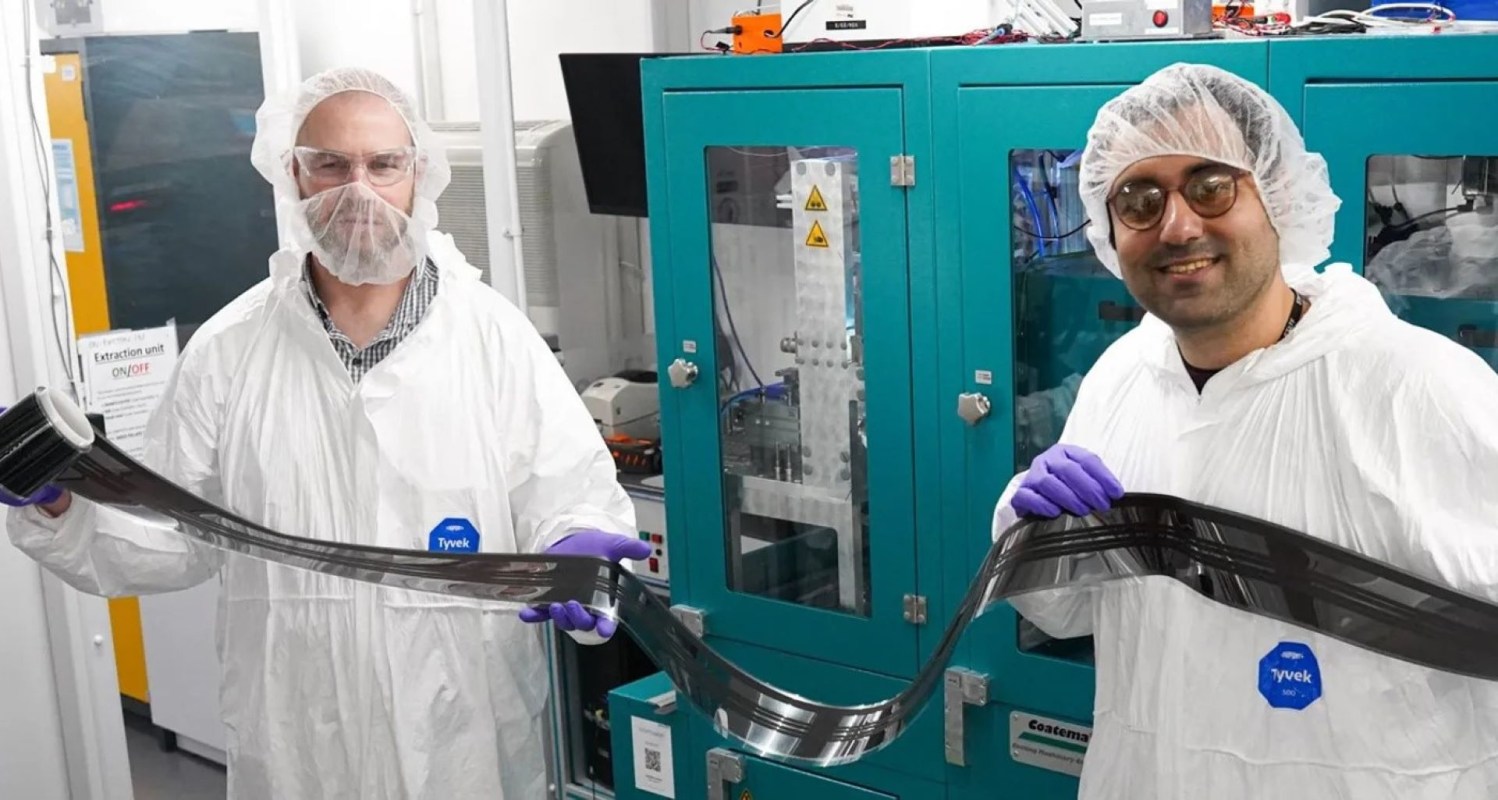Researchers at Swansea University in Wales may have discovered a way to create versatile solar cells with speed and at low cost. What's more, the ribbon of sun-catching material they are showcasing can be printed, researchers report.
If the process goes mainstream, these flexible solar cells could become a more accessible way for people to catch a charge from the sun.
Part of the breakthrough includes replacing rare gold electrodes with abundant carbon electrodes.
Electrodes made of carbon can be applied to solar cells continuously during printing. The process is faster, cheaper, and provides a similar charge as when gold electrodes are used, Swansea says.
The carbon electrodes are applied as an "ink" during the process. The gold ones need to be added after printing, which is slow and costly, the researchers say.
The experts are working with perovskites, a term used to describe a family of compounds capable of catching solar power, according to the Massachusetts Institute of Technology. The compounds are key to making solar-charging materials that can be applied to most surfaces.
Researchers at Swansea were recently pictured holding a strip of just-printed cells. The energy-catching ribbon looks sort of like unwound camera film.
"For a few years now, the efficiency of these devices has been increasing, with the expectation that they could be fully printed. This work has proved that," said Dr. Ershad Parvazian, a researcher at Swansea's SPECIFIC lab, where the tech was developed.
Making solar panels versatile, affordable, and mainstream could have a big impact on other industries — and the environment. Several automakers are introducing solar-charged cars to the market. And at Stanford, researchers created solar panels that charge at night.
Across the pond, Swansea's team now must demonstrate the viability of their printed solar cells during practical use.
"The next challenge in printed [solar cells] for us at Swansea University is to prove to people that these work," research lead Professor Trystan Watson said.
"In order to achieve this, we need to start making something that really looks like a solar panel," he added. "We can then install them on buildings and understand how close we are to delivering on the promise of UK-based manufacturing of green renewables."
Join our free newsletter for easy tips to save more, waste less, and help yourself while helping the planet.









